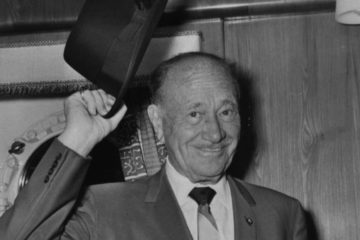
Once the richest family in the United States, the Getty family name became synonymous with “wealth”. Yet, decades of lavish spending and dividing the family’s wealth between countless descendants, has depleted the family’s wealth considerably.
Early History
The modern-day Getty family is of mixed Scotch-Irish, with it being highly likely that the family originated in Nairnshire, in northern Scotland before migrating to Cullavmor, County Londonderry, Ireland in the 17th and 18th centuries.
Although sources differ, it’s believed that in 1808, John Getty of Cullavmor, a Presbytarian peasant, left Ireland for the US in search of a better life. Arriving in the country, Getty settled in southern Pennsylvania, got married and had children.
Living near Gettysburg, John Getty became a local celebrity after he claimed kinship with James Gettys – the founder of the famous nearby town. This claim has since become an integral part of the Getty family lore.
Despite his claims, modern historians can’t find any evidence to suggest the Getty and Gettys families are genetically related.
Eventually, John Getty’s son, James, moved the family to a little further south to Allegany County, Maryland, where the Getty family lived for the next 70 years.
Not long after his arrival in Maryland, James’s wife gave birth to their own son in 1835, who they named John in honor of James’s father. John Getty similarly lived in Allegany County and went on to marry Martha Ann Wiley sometime before 1855.
That year, the couple had their own son, who they named George Franklin Getty. The family moved to Ohio not long after John Getty’s death in 1861.
A Start in The Oil Business
Growing up the Getty family were quite poor, with George and his mother being financially supported by his uncle, Joseph Getty. Impressed by his young nephew’s intelligence, Joseph Getty paid for George’s formal education.
Excelling in school, George Getty enrolled at Ohio Northern University and earned a Bachelor of Science in 1879. After graduating, George put himself through law school at the University of Michigan Law School and was later admitted to the bar.
Moving to Minneapolis, Minnesota in 1884, Getty specialized in insurance and corporate law, George Getty soon made a name for himself as one of the best lawyers in Ohio, which ultimately led him to discover the burgeoning oil industry.
In 1903, using the money he’d saved from his law salary, George Getty acquired the mineral rights to 1,100 aces of land in Bartlesville, in the Oklahoma Territory. The following year, George moved his family to there to begin his career as an independent oilman.
Acquiring several more oil wells, George Getty had become a millionaire (which carried the same prestige then, that being a billionaire carries now) and moved his family to Los Angeles, California.
Even well into his fifties, sixties and seventies, George Getty continued to run his oil business, continuing to acquire new wells which soon led him to incorporate George F. Getty, Inc. to represent his various holdings.
When George Getty died on May 31 1930, George F. Getty, Inc. was valued at $15 million ($244 million adjusted for inflation).
Enter J. Paul Getty
In 1892, whilst still a lawyer in Minneapolis, George’s wife, Sarah Catherine McPherson Risher, gave birth to the couple’s only son, who they named Jean Paul Getty in honor of both George and Sarah’s fathers, who were both called John.
Growing up, Jean excelled in school like his father had decades previously, and similarly became interested in the oil industry. In June 1914, Jean told his parents he wanted to get involved in the oil industry.
Sensing the great opportunity that he’d just been presented with – the ability for him to establish an Oklahoma-based multi-generational oil dynasty like the Rockefellers had done on the East Coast – George offered to help fund his son’s business.
Much to his surprise, Jean agreed, and his father gave him $10,000 ($272,000 in today’s money) to develop his own oil holdings separate from his father’s.
Using this money, the young Getty acquired Nancy Taylor No. 1 oil well site four miles northwest of Haskell, Oklahoma for only $500. Although it would take three years, Getty eventually struck oil and began extracting it on a massive scale.
Indeed, it produced so much oil that Getty became a millionaire in September 1916 and was able to retire at the ripe age of 24. Here, he spent his money as a wealthy bachelor, partying and gaining a reputation for being a womanizer.
Yet, retirement wasn’t for Getty. After only two years of partying, J. Paul Getty returned to the oil fields of Oklahoma and continued to add to his already huge fortune. Over the course of the 1920’s, Getty added over $3 million to his fortune.
Rise of Getty Oil
Prior to his father’s death on May 31 1930, Jean was expected to inherit a two-thirds share in George F. Getty, Inc., whilst his mother inherited the remaining one-third.
Following his father’s death and the reading of his father’s will, Jean inherited only a one-third share in his father’s company, whilst his mother inherited the two-thirds share. As a consolation prize, Jean was made company president.
Understandably annoyed at what he saw as a slight from his father beyond the grave, Jean decided he would acquire his mother’s two-thirds share and bring George F. Getty, Inc. under his personal control.
To that end, Jean contributed heavily to the Sarah C. Getty Trust, an investment trust established by his mother to provide future generations of the Getty family with enough money to allow them to live comfortably.
Richest Men in The World
Kidnapping of John Paul Getty III
Death of J. Paul Getty
A New Generation Takes Over
Sale of Getty Oil
Rise of Another Generation
Getty Family Today
Relationship With The Press
For much of their existence, the Getty family have had a love-hate relationship with the press. Whilst vital for their various business holdings, the Gettys as a whole are quite insular


